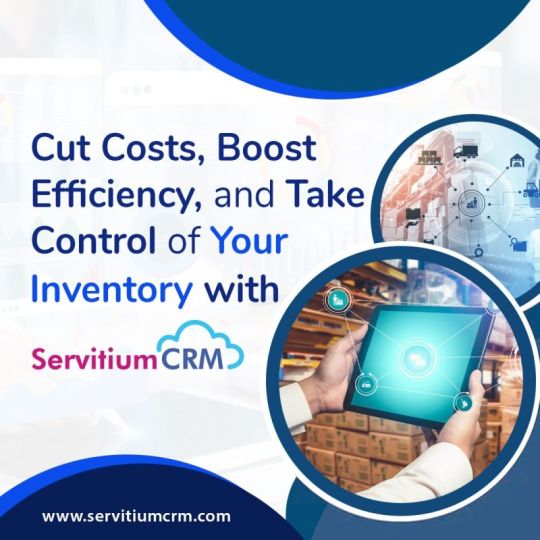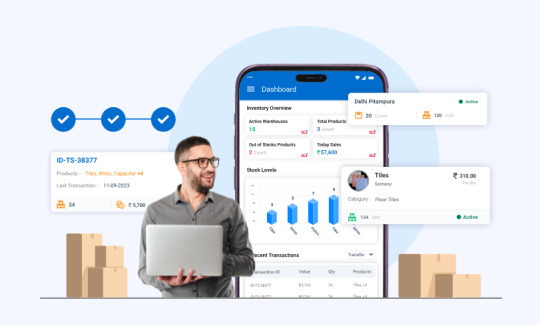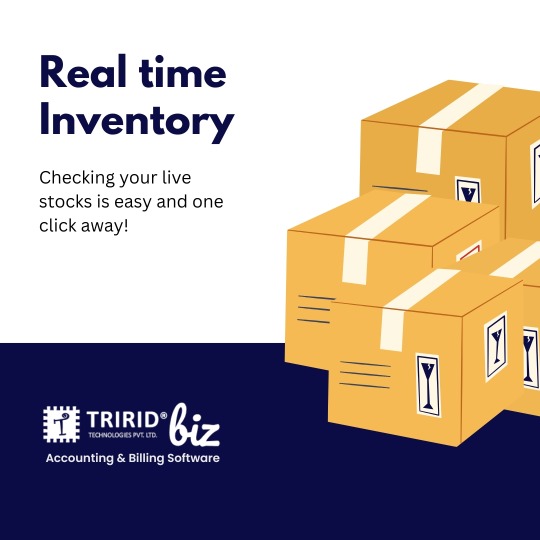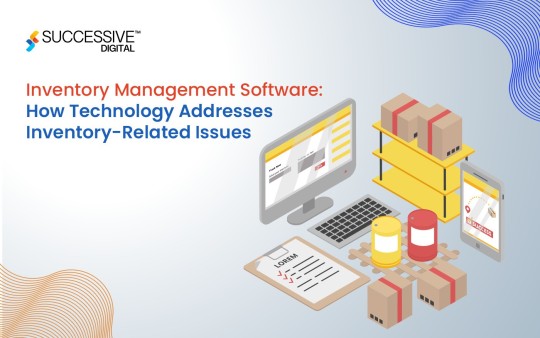#inventory Management Software
Explore tagged Tumblr posts
Text
Home Insurance Claims and Asset Management with Leevaapp
When it comes to home insurance claims, having a comprehensive and organized home inventory is essential. Whether you’re dealing with a minor loss or a major disaster, being able to quickly and accurately document your belongings can make the process easier and faster. But managing a home inventory without the right tools can be challenging. This is where Leevaapp comes in as the best home inventory app designed to simplify the process for you.
The Importance of Home Inventory for Insurance
A thorough home inventory for insurance purposes is crucial in case you ever need to file a claim. Insurance companies often require detailed lists of the items in your home, including descriptions, purchase dates, values, and any serial numbers. It can be difficult to remember everything, especially if you're under stress after a loss. By having an up-to-date home inventory management software like Leevaapp, you can easily create a digital record of all your assets, which is invaluable when submitting claims.
Features of Leevaapp: The Ultimate Home Inventory Software
Leevaapp is an inventory management software that offers multiple features to help you manage your home inventory efficiently. It allows you to track your belongings and store important details like descriptions, images, and even receipts. The app is designed to be user-friendly and accessible, ensuring that you can update your inventory whenever needed.
Organize Your Inventory Easily: With Leevaapp, you can categorize your assets based on rooms, types, or any other criteria you prefer. Whether you're tracking your inventory home or organizing your entire household, the app helps keep everything in order.
Track and Manage Your Assets: The best inventory tracking software provides real-time updates, ensuring that your records are always up-to-date. Whether you’re at home or on the go, you can track new purchases or changes to your assets instantly.
Prepare for Insurance Claims: Having all your belongings organized in one place not only makes it easy to retrieve information when needed but also speeds up the home insurance claims process. When filing a claim, you'll have all the necessary documentation in the app, reducing the risk of delays.
Digital Asset Management Software: Beyond basic home inventory, Leevaapp also serves as a digital asset management software. You can keep a detailed digital record of each item in your home, making it easier to prove the value of your assets if needed.
Easy to Use: With Leevaapp, you don’t need to be tech-savvy to create a professional home inventory. The intuitive design ensures that anyone can use the app to manage their assets without feeling overwhelmed.
Why Choose Leevaapp for Your Home Inventory?
The home insurance claims process can be frustrating if you don't have your inventory properly documented. Leevaapp eliminates the guesswork, helping you easily compile and maintain a detailed home inventory. It ensures you're always ready for the unexpected, with your belongings tracked and protected in the app.
Additionally, with Leevaapp, you don’t just get inventory home management for insurance; you get an all-in-one asset management software that’s perfect for any homeowner. Whether you're interested in a simple home depot inventory checker or a more robust inventory management software to track everything in your house, Leevaapp meets all your needs.
Start Organizing Your Home Inventory Today
Get ahead of any potential insurance claims or asset management needs by downloading Leevaapp today. This powerful inventory tracking software is available on both iOS and Android devices, so you can manage your home inventory from anywhere.
Leeva Secure Home Inventory on the App Store
Leevaapp on Google Play
With Leevaapp, you can ensure that your home inventory is always up-to-date, organized, and ready for anything life throws at you. Take control of your home insurance claims and asset management today!
#Insurnace claim home#home insurance claims#home insurance claims process#home inventory#inventory home#home depot inventory checker#home depot inventory#home inventory software#best home inventory app#home inventory for insurance#home inventory management software#asset management software#best inventory management software#digital asset management software#inventory management software#best inventory tracking software
0 notes
Text
Odoo ERP for Inventory Management Software
The Inventory Management Software provided by Odoo offers an integrated solution for handling stock, warehouses and logistics of any business in the best possible manner. Features like real time tracking, multi location management and automated reordering make businesses work more efficiently and make better decisions. Here are the key features and benefits of using Odoo for inventory-management.
#odoo#odooerp#erp system#businesssolutions#inventory management#inventory management software#erpsoftware#erp#odoo erp
0 notes
Text
ERP for Control Panel Manufacturers: Streamline Operations and Boost Efficiency
In the competitive world of control panel manufacturing, operational efficiency, precision, and meeting delivery timelines are crucial for success. Manufacturers face numerous challenges, from managing complex Bills of Materials (BOMs) to coordinating design, production, and delivery. This is where Enterprise Resource Planning (ERP) systems come into play, revolutionizing the way control panel manufacturers operate.

An ERP for control panel manufacturers integrates all aspects of your business—design, production, inventory, sales, and finance—into a unified system. This blog explores how ERP solutions address industry-specific challenges and why investing in ERP software is essential for staying ahead in the market.
Challenges Faced by Control Panel Manufacturers
Control panel manufacturing is a niche industry with unique challenges:
Complex BOM Management: Each panel may require hundreds of components, making manual management prone to errors.
Frequent Design Revisions: Engineering changes can disrupt production schedules if not communicated effectively.
Inventory Control: Overstocking or understocking components can result in financial losses or production delays.
Strict Quality Standards: Ensuring compliance with industry standards and client specifications is non-negotiable.
Customer Deadlines: Meeting delivery timelines while maintaining quality is critical for customer satisfaction.
How ERP Systems Address These Challenges
An ERP system for control panel manufacturers is designed to overcome these challenges through automation, integration, and real-time data access. Here’s how it helps:
1. Efficient BOM Management
ERP software enables manufacturers to create, store, and manage BOMs efficiently. It automatically tracks component requirements and updates inventory levels based on BOM data, ensuring accuracy and reducing waste.
2. Seamless Design Integration
Modern ERP systems integrate with CAD software, allowing seamless synchronization of design changes with production schedules. Sales and engineering teams can collaborate effectively, ensuring that client specifications are met without delays.
3. Real-Time Inventory Tracking
With ERP, manufacturers gain real-time visibility into inventory levels, component availability, and procurement timelines. This prevents overstocking, understocking, and production delays, optimizing cash flow and operational efficiency.
4. Enhanced Production Scheduling
ERP systems streamline production scheduling by analyzing resource availability, order priorities, and deadlines. This ensures optimal resource utilization and on-time delivery of projects.
5. Quality Assurance and Compliance
An ERP for control panel manufacturing includes quality control modules that help ensure compliance with industry standards. Automated checks and documentation simplify the process of meeting certifications and regulatory requirements.
6. Improved Customer Relationship Management (CRM)
ERP systems often include CRM modules to track customer interactions, manage orders, and provide real-time updates. This enhances customer satisfaction and fosters long-term relationships.
Key Features of an ERP for Control Panel Manufacturers
1. Industry-Specific Customization
ERP systems tailored for control panel manufacturers include modules for BOM management, engineering change orders, and project tracking.
2. Integration with CAD and Design Tools
Seamless integration with CAD software ensures that design changes are automatically reflected in production plans.
3. Scalable Solutions
ERP software grows with your business, accommodating increased production volumes, new product lines, and additional users.
4. Comprehensive Reporting and Analytics
Real-time reporting helps manufacturers analyze production metrics, inventory levels, and financial performance to make data-driven decisions.
Benefits of Implementing ERP in Control Panel Manufacturing
1. Increased Efficiency
By automating routine tasks, ERP reduces manual work and eliminates errors, allowing teams to focus on strategic activities.
2. Cost Savings
Optimized inventory management and reduced wastage translate to significant cost savings over time.
3. Faster Turnaround Times
With streamlined workflows and real-time updates, manufacturers can meet customer deadlines with ease.
4. Better Decision-Making
Access to accurate, real-time data empowers manufacturers to make informed decisions that drive growth and profitability.
5. Enhanced Collaboration
ERP fosters collaboration across departments, ensuring everyone has access to the same data and working toward common goals.
Why Choose ERP for Control Panel Manufacturers?
Investing in an ERP system tailored for control panel manufacturing is not just a technology upgrade—it’s a strategic move that aligns your business with industry best practices. By improving operational efficiency, ensuring compliance, and enhancing customer satisfaction, ERP systems position manufacturers for long-term success.
Top ERP Systems for Control Panel Manufacturers
Some popular ERP solutions in the industry include:
SAP Business One: Known for its scalability and robust features for small to medium-sized businesses.
Oracle NetSuite: A cloud-based ERP with strong financial and inventory management capabilities.
QuotePlan ERP: Specifically designed for manufacturers, offering modules for BOM management, quoting, and production tracking.
Acumatica: A flexible and affordable ERP solution with advanced reporting features.
Conclusion
For control panel manufacturers, an ERP system is more than just software—it’s a competitive advantage. By automating processes, improving collaboration, and providing real-time insights, ERP systems help manufacturers overcome industry challenges and achieve their goals.
If you’re ready to take your��control panel manufacturing business to the next level, now is the time to invest in a tailored ERP solution. Experience the difference it can make in transforming your operations and driving growth!
#product management system#project management software#inventory management software#stock management software#quotation management software
0 notes
Text
Unlock Efficient Supply Chains: Why Inwizards is Your Go-To for Inventory Management
In today's fast-paced business landscape, efficient supply chain and inventory management are more critical than ever. Companies face the constant challenge of balancing stock levels, avoiding overstocking or understocking, and ensuring timely deliveries—all while minimizing costs. This is where Inwizards, a leading IT company, steps in with innovative inventory management solutions tailored to your business needs.

Why Inventory Management Matters
Effective inventory management isn't just about keeping track of stock—it's about optimizing resources, enhancing productivity, and delivering exceptional customer experiences. Businesses that fail to streamline their inventory systems often face disruptions, increased costs, and dissatisfied customers.
How Inwizards Makes a Difference
At Inwizards, we understand the unique challenges faced by businesses across industries. Our inventory management solutions are designed to:
Automate Processes: Eliminate manual errors and streamline stock management with advanced automation tools.
Real-Time Data Insights: Make informed decisions with real-time analytics and reporting.
Scalability: Whether you're a small startup or a large enterprise, our systems grow with your business.
Custom Solutions: Every business is unique, and so are our inventory management solutions.
Cutting-Edge Technology at Your Fingertips
Inwizards leverages the latest technologies, including AI, IoT, and cloud computing, to ensure your inventory management system is not only efficient but also future-ready. Our user-friendly platforms integrate seamlessly with existing ERP and supply chain tools, offering a smooth operational experience.
Real Business Impact
Partnering with Inwizards has helped businesses achieve:
Up to 40% reduction in inventory carrying costs.
Improved order accuracy by up to 99%.
Enhanced customer satisfaction through faster deliveries.
Why Choose Inwizards?
With years of experience in delivering IT solutions, Inwizards is not just a service provider—it's your strategic partner. Our team of experts works closely with you to identify pain points, implement tailored solutions, and drive measurable results.
Ready to transform your supply chain and inventory management systems? Partner with Inwizards and unlock new levels of efficiency and growth.
🚀 Let's redefine inventory management together!
#inwizards software technology#Inventory Management Software#Software#web development#Custom Software
0 notes
Text

Effective inventory control is the key to seamless operations! With ServitiumCRM's Inventory Management, empower your service teams with the insights they need to plan more efficiently, provide better service, and enhance customer satisfaction. Everything is easily accessible, from monitoring product specifications and purchase history to overseeing stock movements. Whether in the warehouse or on-site with the client, every detail remains perfectly synchronized for optimal performance. Maintain precise and real-time stock levels. Experience the intelligent way to handle your inventory today: Read More...
#inventory management services#inventory management crm#inventory management software#simple inventory management software#servitiumcrm
0 notes
Text

0 notes
Text
#technews#Enterprise Resource Planning (ERP)#ERP Solutions#Business Management Software#Integrated Business Applications#Supply Chain Management#Customer Relationship Management (CRM)#Financial Management Systems#Human Resources Management#Inventory Management Software#Manufacturing Resource Planning#Cloud ERP Solutions#On-Premise ERP Systems#ERP Implementation Services#ERP Consulting#ERP Software for Small Business#ERP Software for Manufacturing#ERP System Integration#ERP Software Development#ERP Customization Services#ERP Training and Support
0 notes
Text
Easily Track Your Inventory in Real Time with TRIRID Accounting

It is not easy to manage your inventory, especially if the levels change quickly. With the help of TRIRID Accounting & Billing Software, you can easily monitor your inventory in real-time and be ahead of the game.
Why Real-Time Inventory Tracking Is Important
Accurate stock levels: Never be short of stock or overorder again! Monitor the level of your inventory at various locations in real time.
Better Cash Flow: Buy at the right time to ensure you have products.
Seamless Integration: Connect your accounting, sales, and billing processes with TRIRID for reduced manual errors and savings in time.
Faster Decisions: Real-time data ensures you are making better data-driven decisions that grow your business.
Key Features of TRIRID's Live Stock Updates
Live Inventory Monitoring: Accurate tracking of available stock.
Multi-Location Management: See and manage inventory across multiple warehouses or branches.
Low Stock Alerts: Get notified when stock levels are running low.
Automated Reordering: Set up automatic purchase orders to restock inventory.
Detailed Reports: Generate comprehensive reports on stock movement, sales, and trends.
With TRIRID Accounting & Billing Software you get more than inventory control. You get an entire account, billing, and financials solution all in one.
Ready to take hold of your inventory?
Call @ +91 8980010210 / +91 9023134246
Visit @ https://tririd.com/tririd-biz-gst-billing-accounting-software
#Best accounting software in Ahmedabad Gujarat#real-time inventory tracking#inventory management software#TRIRID-Billing software in Bopal in Ahmedabad#TRIRID-Billing software in ISCON-Ambli road-ahmedabad
0 notes
Text
Home Insurance Claims with Leevaapp: The Ultimate Home Inventory and Asset Management Tool
When it comes to home insurance claims, having a comprehensive and organized home inventory is essential. Whether you’re dealing with a minor loss or a major disaster, being able to quickly and accurately document your belongings can make the process easier and faster. But managing a home inventory without the right tools can be challenging. This is where Leevaapp comes in as the best home inventory app designed to simplify the process for you.
The Importance of Home Inventory for Insurance
A thorough home inventory for insurance purposes is crucial in case you ever need to file a claim. Insurance companies often require detailed lists of the items in your home, including descriptions, purchase dates, values, and any serial numbers. It can be difficult to remember everything, especially if you're under stress after a loss. By having an up-to-date home inventory management software like Leevaapp, you can easily create a digital record of all your assets, which is invaluable when submitting claims.
Features of Leevaapp: The Ultimate Home Inventory Software
Leevaapp is an inventory management software that offers multiple features to help you manage your home inventory efficiently. It allows you to track your belongings and store important details like descriptions, images, and even receipts. The app is designed to be user-friendly and accessible, ensuring that you can update your inventory whenever needed.
Organize Your Inventory Easily: With Leevaapp, you can categorize your assets based on rooms, types, or any other criteria you prefer. Whether you're tracking your inventory home or organizing your entire household, the app helps keep everything in order.
Track and Manage Your Assets: The best inventory tracking software provides real-time updates, ensuring that your records are always up-to-date. Whether you’re at home or on the go, you can track new purchases or changes to your assets instantly.
Prepare for Insurance Claims: Having all your belongings organized in one place not only makes it easy to retrieve information when needed but also speeds up the home insurance claims process. When filing a claim, you'll have all the necessary documentation in the app, reducing the risk of delays.
Digital Asset Management Software: Beyond basic home inventory, Leevaapp also serves as a digital asset management software. You can keep a detailed digital record of each item in your home, making it easier to prove the value of your assets if needed.
Easy to Use: With Leevaapp, you don’t need to be tech-savvy to create a professional home inventory. The intuitive design ensures that anyone can use the app to manage their assets without feeling overwhelmed.
Why Choose Leevaapp for Your Home Inventory?
The home insurance claims process can be frustrating if you don't have your inventory properly documented. Leevaapp eliminates the guesswork, helping you easily compile and maintain a detailed home inventory. It ensures you're always ready for the unexpected, with your belongings tracked and protected in the app.
Additionally, with Leevaapp, you don’t just get inventory home management for insurance; you get an all-in-one asset management software that’s perfect for any homeowner. Whether you're interested in a simple home depot inventory checker or a more robust inventory management software to track everything in your house, Leevaapp meets all your needs.
Start Organizing Your Home Inventory Today
Get ahead of any potential insurance claims or asset management needs by downloading Leevaapp today. This powerful inventory tracking software is available on both iOS and Android devices, so you can manage your home inventory from anywhere.
Leeva Secure Home Inventory on the App Store
Leevaapp on Google Play
With Leevaapp, you can ensure that your home inventory is always up-to-date, organized, and ready for anything life throws at you. Take control of your home insurance claims and asset management today!
#Insurnace claim home#home insurance claims#home insurance claims process#home inventory#inventory home#home depot inventory checker#home depot inventory#home inventory software#best home inventory app#home inventory for insurance#home inventory management software#asset management software#best inventory management software#digital asset management software#inventory management software#best inventory tracking software
0 notes
Text
Inventory Management Software
Apex Custom Software’s Inventory Management Software helps healthcare organizations efficiently track and manage their supplies, medications, and equipment. With features like real-time tracking, automatic restocking alerts, and detailed reporting, the software ensures that inventory levels are optimized and waste is minimized. It provides healthcare providers with full visibility into their stock, enabling better decision-making and improving operational efficiency in various healthcare environments.
0 notes
Text
Switchgear Price List and Estimation Software: A New Era for Electrical Panel Manufacturers
In the dynamic world of electrical panel manufacturing, staying competitive requires not only precision in production but also an in-depth understanding of pricing and cost estimation. As panel manufacturers strive to meet market demands, managing costs effectively becomes a critical challenge. One of the essential elements of ensuring competitive pricing is having access to up-to-date switchgear price lists, alongside an efficient electrical panel estimation software.

Integrating an up-to-date switchgear price list with estimation software, like QuotePlan, can transform the way electrical panel manufacturers approach pricing and quoting. This fusion of data-driven pricing with advanced software solutions empowers manufacturers to create highly accurate, competitive quotes while maintaining profitability. Let’s explore how integrating QuotePlan into this process can lead to better cost control, pricing accuracy, and a distinct competitive edge.
1. Accurate and Real-Time Price Updates
Switchgear components, such as circuit breakers, isolators, and other electrical parts, are essential in every control panel. The prices for these components can fluctuate due to factors such as market demand, supply chain issues, and material costs. When manufacturers manually track these price changes, there’s a high risk of outdated information leading to pricing errors.
By integrating a real-time switchgear price list with QuotePlan, manufacturers can ensure that they are always quoting based on the most accurate and current prices. QuotePlan syncs with live databases and provides automatic updates to the pricing for switchgear and other components. This feature significantly reduces human error and the time spent updating price lists manually, offering a more streamlined, efficient process. With accurate pricing, manufacturers can deliver competitive quotes that reflect the current market conditions, which ultimately strengthens their position in the marketplace.
2. Streamlining the Estimation Process
Creating an accurate quote for a control panel can be a complex and time-consuming process. Manufacturers must account for various factors, including material costs, labor, and additional components like switchgear, which might change in pricing frequently. Without automation, this process often leads to inconsistencies, errors, and longer wait times for quotes, which can delay customer responses and project approvals.
QuotePlan solves this problem by automating the estimation process. The software combines switchgear price lists with the required material costs and labor inputs, calculating the total cost of producing an electrical panel seamlessly. This integration eliminates the need for manual calculations, which not only reduces errors but also speeds up the overall quoting process. Manufacturers can now generate a comprehensive and precise quote in a fraction of the time it would take using traditional methods.
The integration between QuotePlan and the switchgear price list allows manufacturers to adjust the pricing of components easily in real-time, making it easier to update quotes when necessary, based on new pricing or changes in customer requirements.
3. Improved Profit Margins through Accurate Costing
The key to maximizing profits in the electrical panel manufacturing industry lies in having an accurate view of costs and being able to adjust pricing quickly. By integrating the switchgear price list directly into QuotePlan, manufacturers can instantly calculate the costs associated with each individual component, including the switchgear. This allows for a detailed breakdown of the costs associated with every element of the panel.
This level of transparency in costing ensures that manufacturers can adjust their pricing strategies accordingly to reflect all variable factors. They can calculate exact profit margins for every quote, ensuring they don’t undercharge or overcharge their customers. Additionally, QuotePlan can suggest markups based on historical data, helping manufacturers identify the most profitable pricing model while remaining competitive.
4. Enhancing Competitiveness in the Market
In today’s fast-paced marketplace, offering competitive pricing is essential for securing contracts. However, providing lower quotes doesn’t always lead to better profits, especially if the pricing is inaccurate or based on outdated components. By integrating QuotePlan with the latest switchgear price list, manufacturers gain the advantage of providing precise, up-to-date quotes that reflect both market trends and their specific cost structure.
By accurately accounting for switchgear prices and updating the software with real-time data, manufacturers can offer more competitive bids without sacrificing quality or profitability. The ability to generate professional, timely, and accurate quotes helps manufacturers build stronger relationships with clients, increasing the likelihood of winning contracts.
Furthermore, when clients receive a quote that accurately reflects the cost of materials, including switchgear, they are more likely to trust the manufacturer’s expertise. This trust translates into greater client retention, more referrals, and an enhanced reputation for reliability and transparency.
5. Faster Response Times for Clients
One of the significant advantages of using integrated estimation software like QuotePlan is the speed with which quotes can be generated. The manual process of estimating prices for electrical panels, especially those with numerous components, can take a significant amount of time. During this time, manufacturers may lose out on potential contracts to competitors who provide faster turnaround times.
QuotePlan addresses this by reducing the quoting process from hours or days to just minutes. By automatically pulling from an up-to-date switchgear price list and calculating all costs in real time, manufacturers can generate and send accurate quotes to clients quickly. This speed allows manufacturers to respond to tenders and proposals faster, giving them a competitive edge when it comes to securing business.
6. Seamless Integration with Inventory and ERP Systems
Manufacturers often juggle several systems to manage different aspects of their business, from pricing and quotations to inventory and order processing. By integrating QuotePlan with inventory management and ERP systems, manufacturers can ensure that the pricing and stock levels of switchgear components are always up-to-date across all platforms.
This integration eliminates the risk of inventory shortages or overstocking, as manufacturers can immediately see which components, including switchgear, are available in real time. Furthermore, when prices are updated in the switchgear price list, these updates automatically flow through to the estimation software, ensuring consistency across the business. With QuotePlan and its seamless integration, manufacturers can maintain control over their entire workflow, from quoting and pricing to inventory and order fulfillment.
7. Reducing Manual Errors and Enhancing Productivity
Manual quoting often leads to human error, especially when dealing with complex pricing factors and multiple components such as switchgear. Even the smallest mistake can result in inaccurate quotes and impact the profitability of a project. These errors can be costly, as manufacturers may either lose out on business by overpricing or incur losses by underpricing.
QuotePlan removes this issue by automating the quoting process and eliminating the risk of manual errors. With accurate, real-time updates to the switchgear price list and integrated cost calculations, manufacturers can confidently produce error-free quotes. The result is not only higher productivity but also a more efficient workflow, as staff no longer need to spend time manually adjusting quotes or correcting errors.
Conclusion
Integrating QuotePlan, a powerful electrical control panel estimation software, with a real-time switchgear price list is a game-changer for manufacturers in the electrical panel industry. This powerful combination allows for faster, more accurate, and more competitive quoting, enabling manufacturers to streamline their workflows, reduce costs, and improve profitability.
By automating the estimation process, offering precise pricing, and ensuring real-time updates to costs, manufacturers can stay ahead of market trends and respond quickly to client needs. Whether it’s controlling costs, optimizing inventory, or enhancing profitability, QuotePlan and an up-to-date switchgear price list will undoubtedly help manufacturers maintain a competitive edge in an ever-evolving industry.
#product management system#project management software#stock management software#inventory management software
0 notes
Text
Inventory Management Software: How Technology Addresses Inventory-Related Issues

Inventory management software streamlines the tracking, storing, and replenishing of goods, reducing errors and inefficiencies. By automating processes, it optimizes stock levels, prevents overstocking or stockouts, and improves order accuracy. With real-time data, analytics, and reporting, businesses can make informed decisions, enhancing productivity and customer satisfaction while minimizing costs and addressing inventory-related challenges effectively.
0 notes
Text
What is retail inventory management software?
Retail inventory management software is a critical tool that allows firms to track, manage, and optimise their inventory levels in real time.
It automates the process of ordering, storing, and using inventory, which is critical for assuring product availability and minimising stock outs or overstock problems.
This software provides merchants with complete visibility into their stock levels and warehouse operations by including advanced capabilities like barcode scanning, stock tracking, and inventory alerts.
Functions of Retail Inventory Management Software:
Stock Level Tracking: Monitor inventory levels in real time to ensure you always have the proper goods on hand.
Automated Reordering: Automatically restock when stock levels fall below a specified level, preventing stockouts.
Warehouse Management: Optimise warehouse organisation by controlling bin placements, transfers, and stock reservations.
Inventory Forecasting: Use historical data and predictive analytics to estimate demand and make more informed purchase decisions.
Multi-location Management: Easily manage inventory across many locations or warehouses to keep control of the whole retail chain.
Importance of Retail Inventory Management Software:
Improves Accuracy: Manual stock tracking frequently results in mistakes and anomalies. Businesses that automate inventory tracking can keep a more accurate view of their inventory levels.
Enhances Efficiency: Automated procedures eliminate the need for manual input, saving time and optimising workflow. Inventory counting, order generation, and delivery become more efficient.
Reduces Costs: With accurate stock control, organisations may avoid waste, overstocking, and wasteful purchases, resulting in cheaper carrying costs.
Supports Growth: As firms expand and develop, keeping track of greater supplies across various locations becomes more challenging. Inventory management software supports continuous expansion by providing scalable capabilities for larger organisations.
Boosts Customer Satisfaction: Businesses can enhance their consumers' purchasing experiences by keeping popular goods in stock and properly managing returns and exchanges.
Ginesys One for Retail Inventory Management:
Ginesys One provides comprehensive inventory management solutions tailored for the retail sector. With real-time tracking, automated reordering, and multi-location management, it ensures retailers can streamline their inventory operations and minimise costs.
Whether you're managing a single store or a vast retail chain, Ginesys One ensures that you always have the right products available, enhancing both operational efficiency and customer satisfaction.
By implementing a robust retail inventory management software like Ginesys One, retailers can unlock the power of data-driven decisions and ensure a seamless experience for their customers across all sales channels.
#retail inventory management#inventory management software#retail inventory management software#inventory management
0 notes
Text
Comprehensive Order Management Services for Streamlined Operations
Our Order Management Services provide end-to-end solutions to streamline the entire order lifecycle. From order processing and inventory management to fulfillment and tracking, we help businesses reduce errors, improve efficiency, and enhance customer satisfaction. By leveraging advanced technology and automation, our services ensure real-time visibility, accurate data, and seamless integration with existing systems. Whether you're handling a high volume of orders or scaling up, we simplify the process and optimize your operations for growth.
#Inventory Management Software#Order Management Services#Order Management Specialist#Cloud ERP for Small Businesses#Procurement Software for SMEs#Core Hr Function Software#Shop Floor Management Software
0 notes
